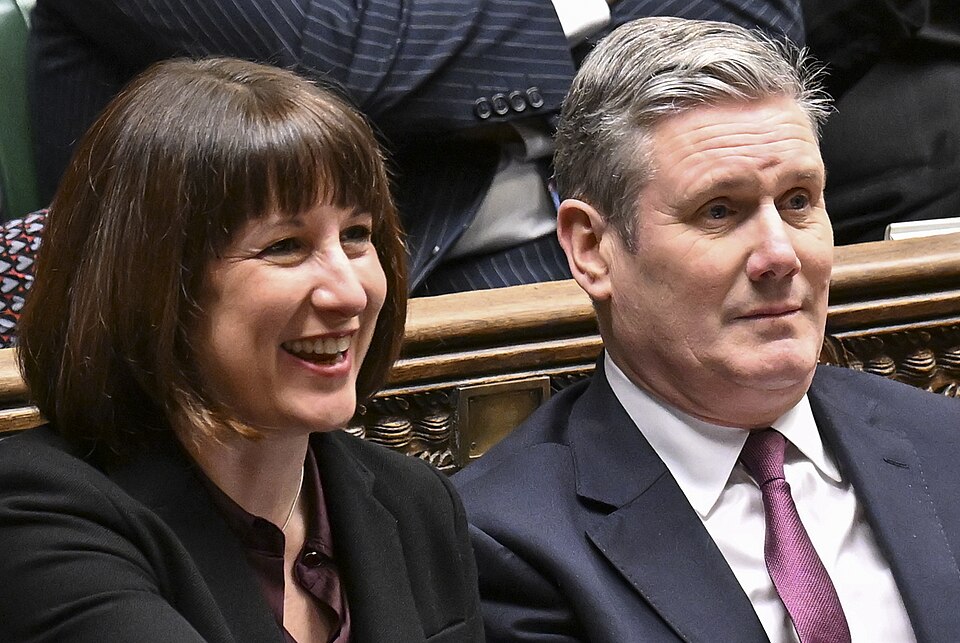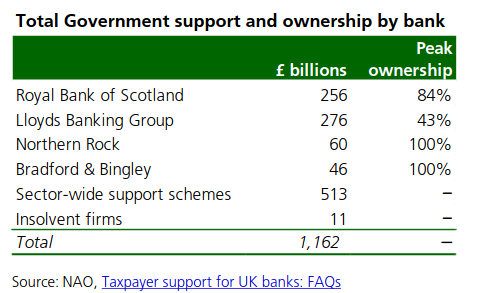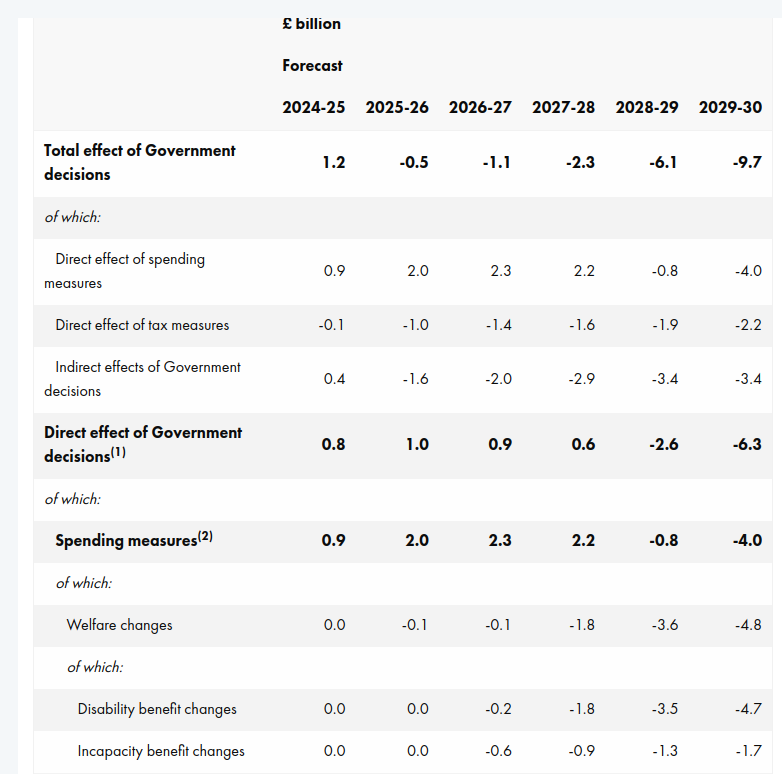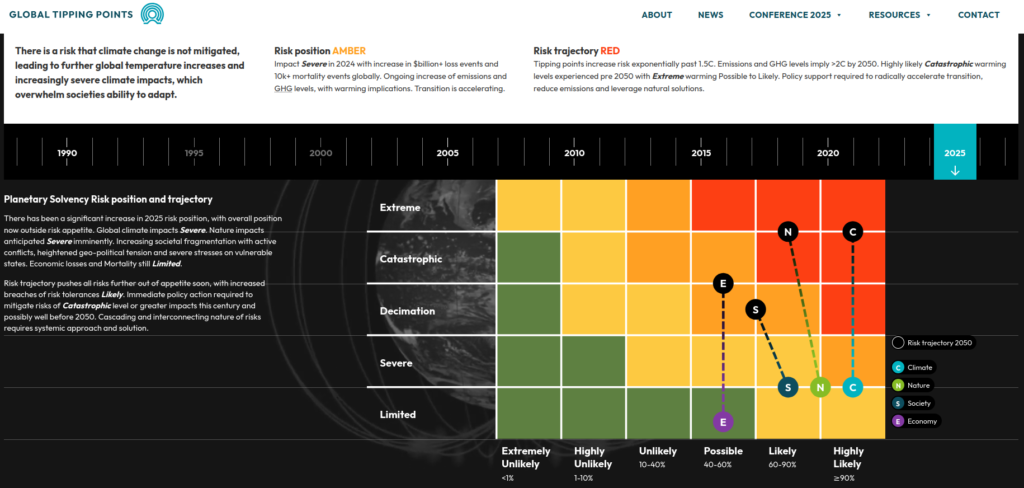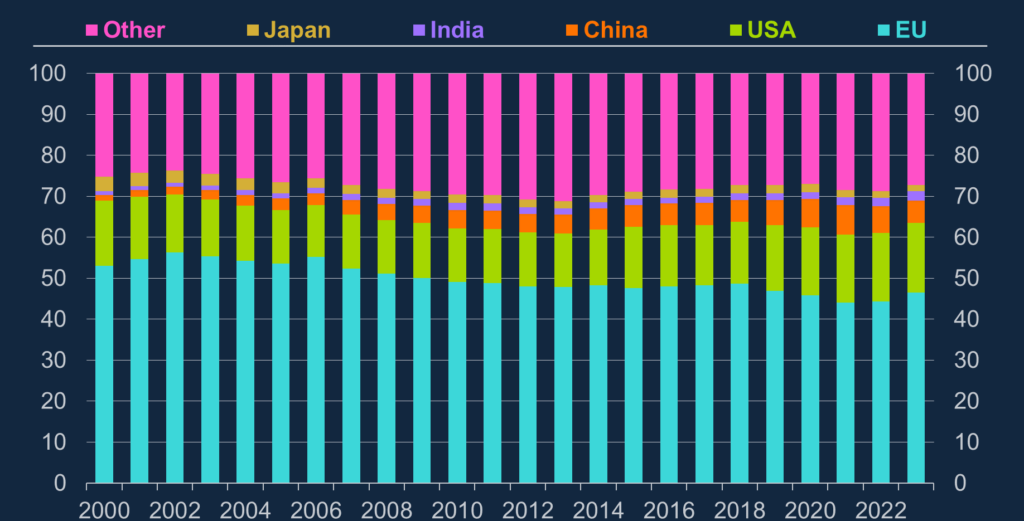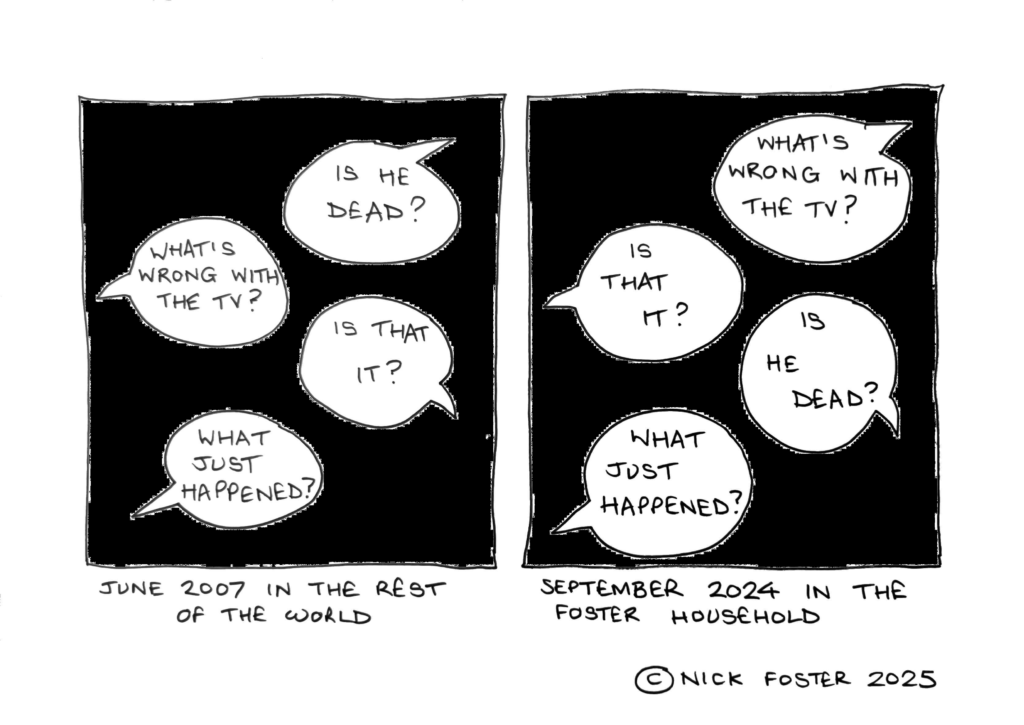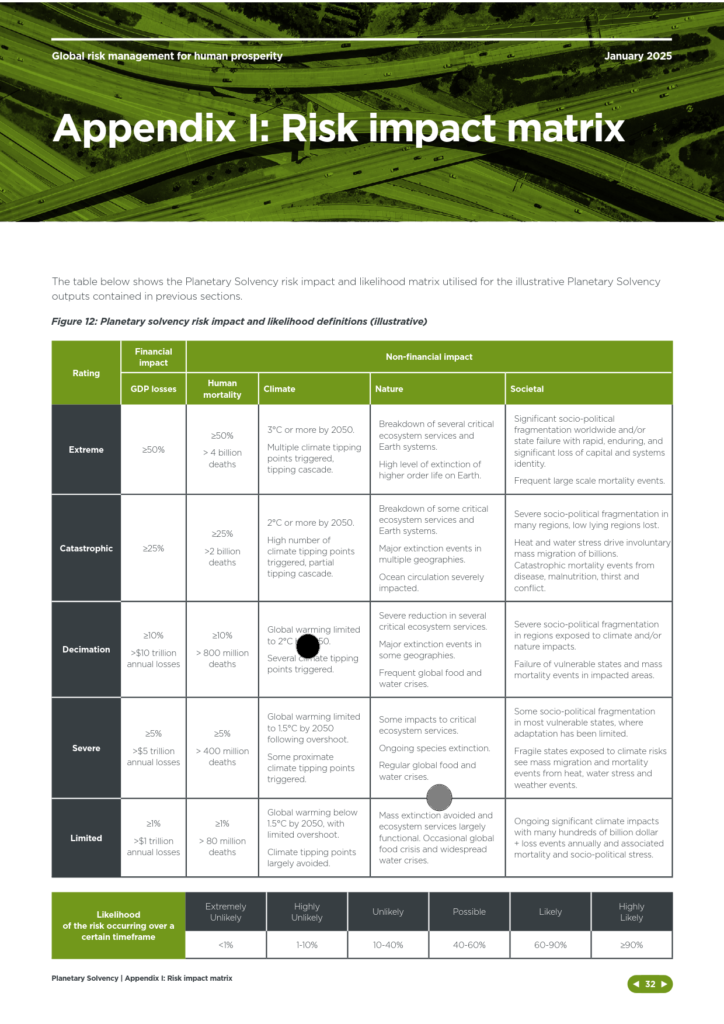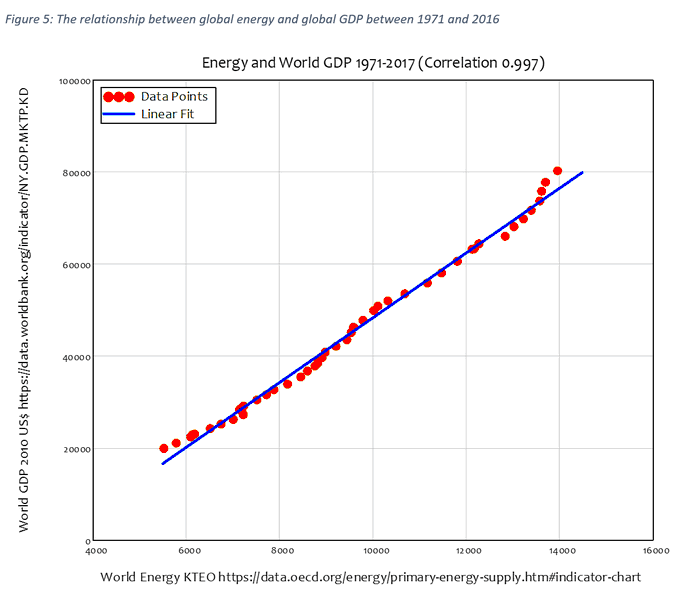
This is a piece about risk management. To be read to the soundtrack of The Beatles singing Revolution (the slow version from The White Album).
Dr Strangelove is a movie which can be described in many ways, but one way to think of it is as a movie where governance arrangements made in a different time are no longer adequate to the task at hand. General Ripper can only order a nuclear strike as a retaliatory nuclear attack on the Soviets if all of his superior officers have been killed in a first strike on the United States. However the aircraft crew’s knowledge of whether there has been a first strike is dependent upon a communication system which has been set to only accept messages preceded by a secret three-letter code known only to the same General Ripper. The Soviet Union has a Doomsday Machine of cobalt bombs, which would be automatically triggered as a nuclear deterrent if attacked, which would make the Earth uninhabitable for 93 years and only had a point if the United States were aware that it existed. However the Soviet leadership had delayed the announcement of its existence so that it could be a surprise for the following week’s Party Congress.
Our first past the post voting system can be described in many ways, but one way to think of it is as a set of governance arrangements made in a different time which are no longer adequate to the task at hand.
In July 2024, the UK General Election result looked like this:

Labour won 63% of the seats with 34% of the vote. The Government have therefore been reluctant to change the voting system. Despite a conference vote demanding it, it didn’t make it into their election manifesto. However fast forward 17 months and the polls look like this:
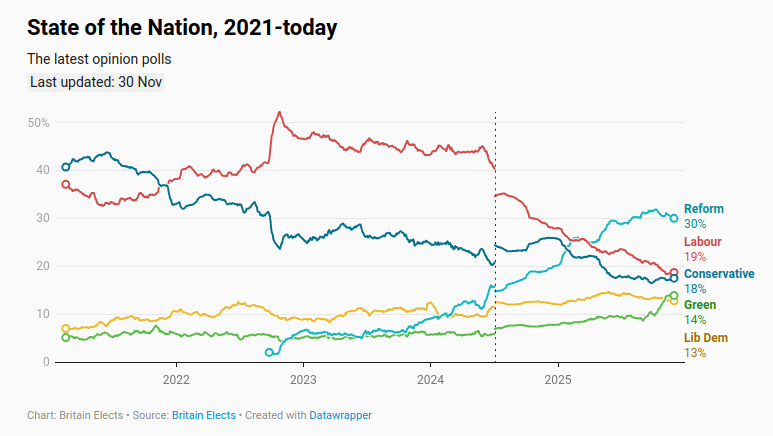
With one conversion into projected seats (by Electoral Calculus) looking like this:
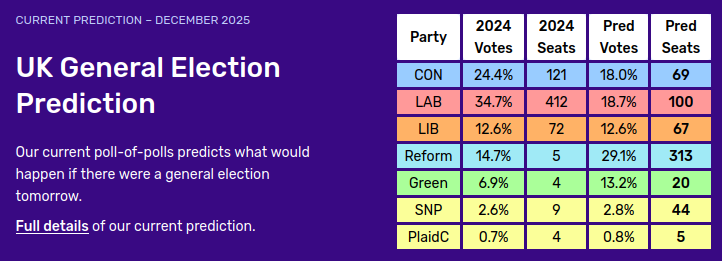
So this time, Reform are predicted to have 48% of the seats based on 29% of the vote. This is no way to run a railroad. We need proportional representation now. Join the campaign here.
We have an example playing out across the Atlantic of a government taking on powers they don’t have to enact policies that noone voted for. And that is when they do have a constitution which they could use if they had the will, whereas, as David Allen Green said in October:
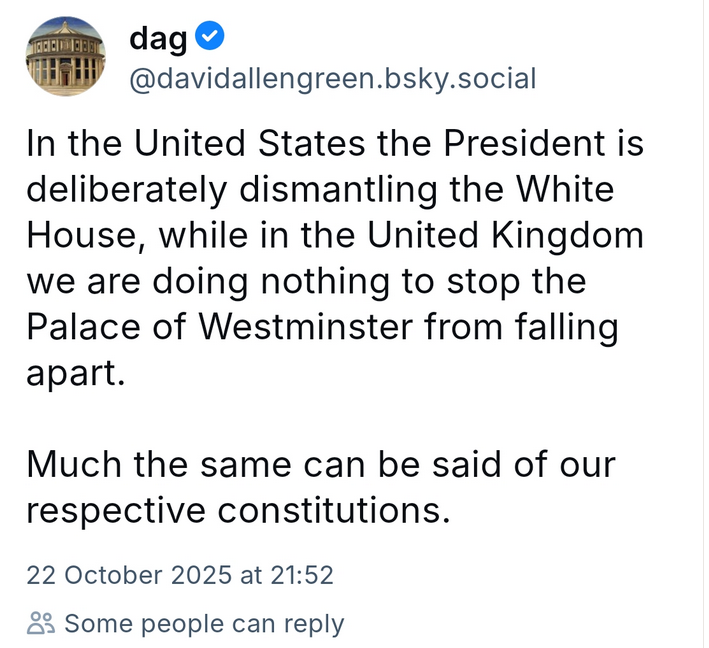
Our current constitutional arrangements are our Doomsday Machine. As The Institute for Government have found in their Review of the UK Constitution:
Weaknesses in the system of checks and balances have been exposed – the UK system is in theory self-regulating. It relies on those within it being willing to exercise restraint, adhering to largely unwritten rules of behaviour, and, when they fail to do so, facing political consequences. In recent years, various political actors have shown an increased willingness to test constitutional boundaries – seen most brazenly in proposals to break international law and by the executive repeatedly passing legislation on devolved matters without consent from their respective legislatures – with such political checks providing little impediment to them doing so. Debates over constitutional principle have increasingly been considered secondary to other political goals, and MPs, the media and the public have lacked sufficient understanding of the constitution to hold decision makers to account.
The problem with The Institute for Government in my view is their earnestness. It is the reason we can all remember Dr Strangelove from over 60 years ago when we have forgotten the almost identical subject matter of the far more po-faced Fail Safe (that, and the fact that Kubrick had their release date postponed by launching a lawsuit) and long after I expect us to have forgotten Bigelow’s recent A House of Dynamite. The thing is that, for me, the characters in Dr Strangelove remind me of the general ridiculousness of humanity and I don’t want them to die, even the mad ones. Whereas I find myself fairly indifferent to the fate of the relatively very serious cast of Dynamite. The Institute for Government‘s problem is that I feel the same way about some of their characters. Like Citizen Assembly for instance. Whenever this character is mentioned I find myself thinking of the Lennon line from The Beatles‘ Revolution:
“If you go carrying pictures of Chairman Mao, you ain’t gonna make it with anyone anyhow.”
We badly need a campaign capable of energising people about how we are governed. Something that, in my view, The Institute for Government are not currently providing.
And then there is the money. As Democracy for Sale have revealed, 75% of donations, totalling £23 million, to the likely ruling party at our next election have come from just three people. If you think there should be a cap on political donations you can sign the petition here. Think of the country owned by three people (and all for £23 million) and it starts to make Blackadder‘s Dunny-on-the-Wold, with its constituency of “three rather mangy cows, a dachshund named `Colin’, and a small hen in its late forties”, look positively democratic. You might as well put General Ripper in charge.
Our governance arrangements are satirising themselves at the moment. Let’s do something about it this year.




